The 10 Toughest Game Animals in North America
Posted 2022-07-19 by Will Brantley
It’s the big bears, right? Or maybe elk? Some will swear it’s a sea duck. Check our picks for this timeless campfire debate
Is there really such a thing as a “tough” game animal? After all, a bullet or arrow through the vitals will do the job on anything, from squirrels to elephants, right?
That’s true. But equally true is that some critters, due to the size of their vitals, thickness of hide, and bone structure, are just physically more difficult to bring down. And others, due to the terrain in which they’re found and maybe things we can’t quantify — like attitude — are certainly tougher.
One thing’s for sure: Hunters have always revered and celebrated tough game animals. An animal with strong tenacity for life is worthy of extra respect, and a good reminder of the responsibilities we accept when we settle our sights and squeeze a trigger. I’ve hunted almost every animal on this list, and for the couple that I haven’t, I asked for expert input. Some of these critters weigh just a few ounces, while others are a half ton or more. Some have teeth, while others have feathers. But pound for pound, these 10 game animals get my vote as the toughest ones in North America. We’ll start with the smallest, and work our way up.
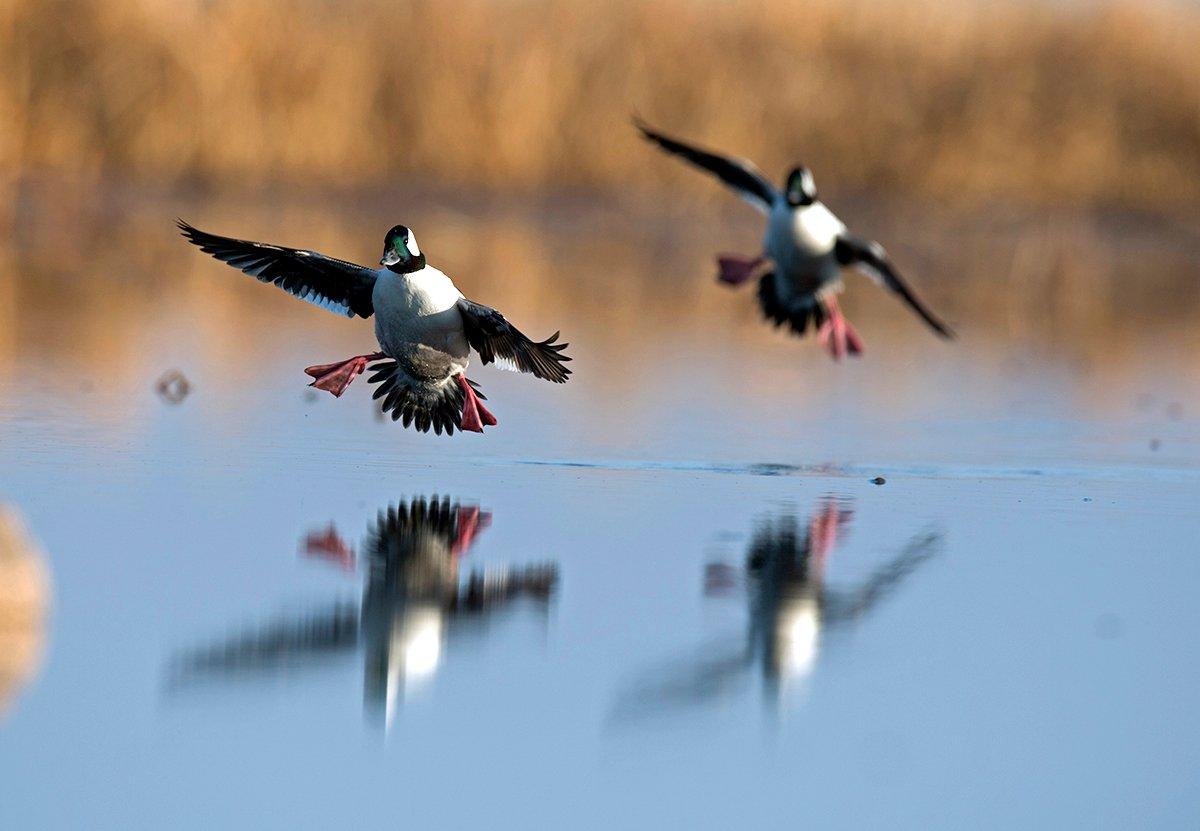
1 | Sea Ducks
Sure, I’m talking about the eiders and scoters gunned along saltwater coasts, but also the buffleheads and goldeneyes that frequent big inland waterways. These ducks are notorious for crumpling into a dramatic splash at the shot, only to immediately dive under water, surface out of range, and fly away again. They’ve been known to drown retrievers by leading them on long chases over deep, open water. A follow-up shot or five is typically the only way to bring them to hand. Most sea duck hunters live by the adage of “keep shooting till they’re belly up,” and that’s good advice. It’s good advice to keep your shots close, too, when you’re dealing with sea ducks.
Waterfowl are tough anyway, but clean just a few of these specialized birds and you’ll understand why they’re a class apart. Their feathers and skin might as well be armor, compared with a mallard or other puddle duck.
Image by Images on the Wildside
(Don't Miss: Best States for a Bull Canvasback, Revisited)
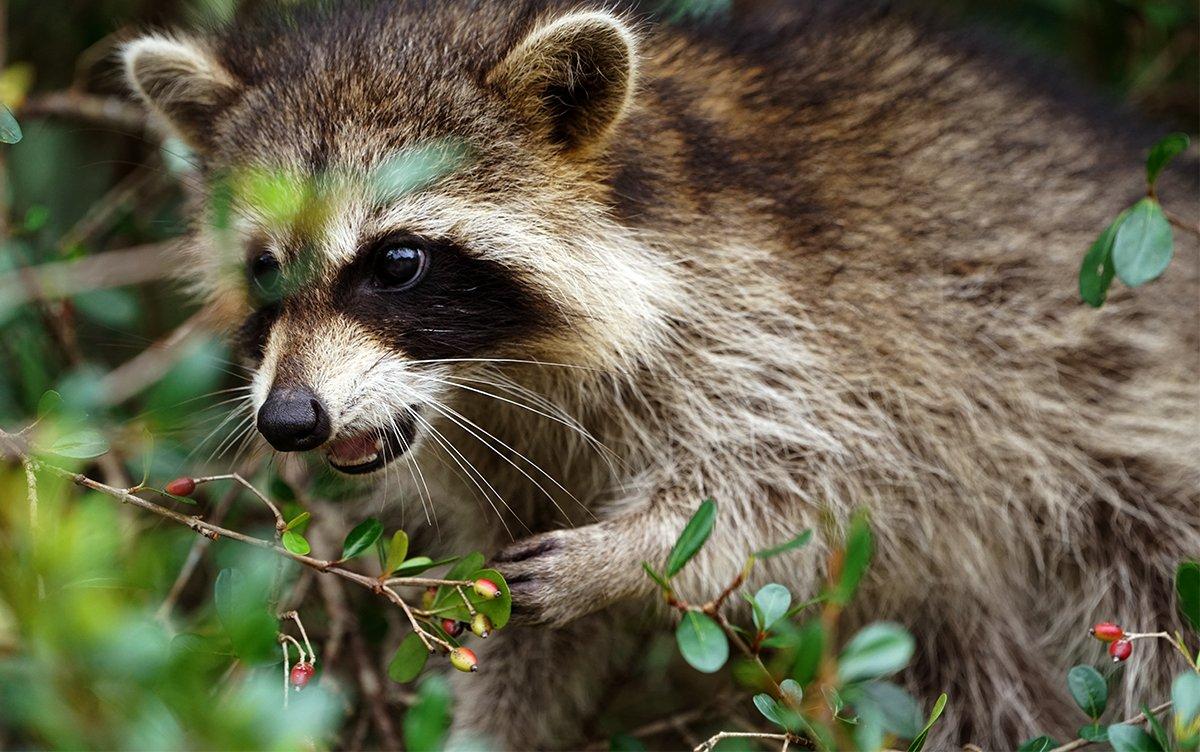
2 | Raccoon
I’m an avid trapper, and I’ve put up more raccoon furs than I care to count. These intelligent and adaptable animals live about everywhere, from Billy Coleman’s deep timber haunts in the Ozarks to the suburbs. And pound for pound, I’m not sure anything on this list is tougher. Raccoons sport a thick coat (especially in winter, when fur is prime) over a layer of fat that can seem almost bulletproof. A good many hunters underestimate their size, too, due to their short legs and compact dimensions. But big boars topping the scale at 20 pounds aren’t uncommon.
Most people hunt raccoons with rimfires, and with that, perfect shot placement is required. Not only can they take a hit, but raccoons will fight to the end, too. Most hound hunters’ dogs have the nipped ears and scarred faces to prove it.
Image by Photography by Pappy
(Hungry? Check out this Maple Bourbon Glazed Grilled Raccoon Recipe)
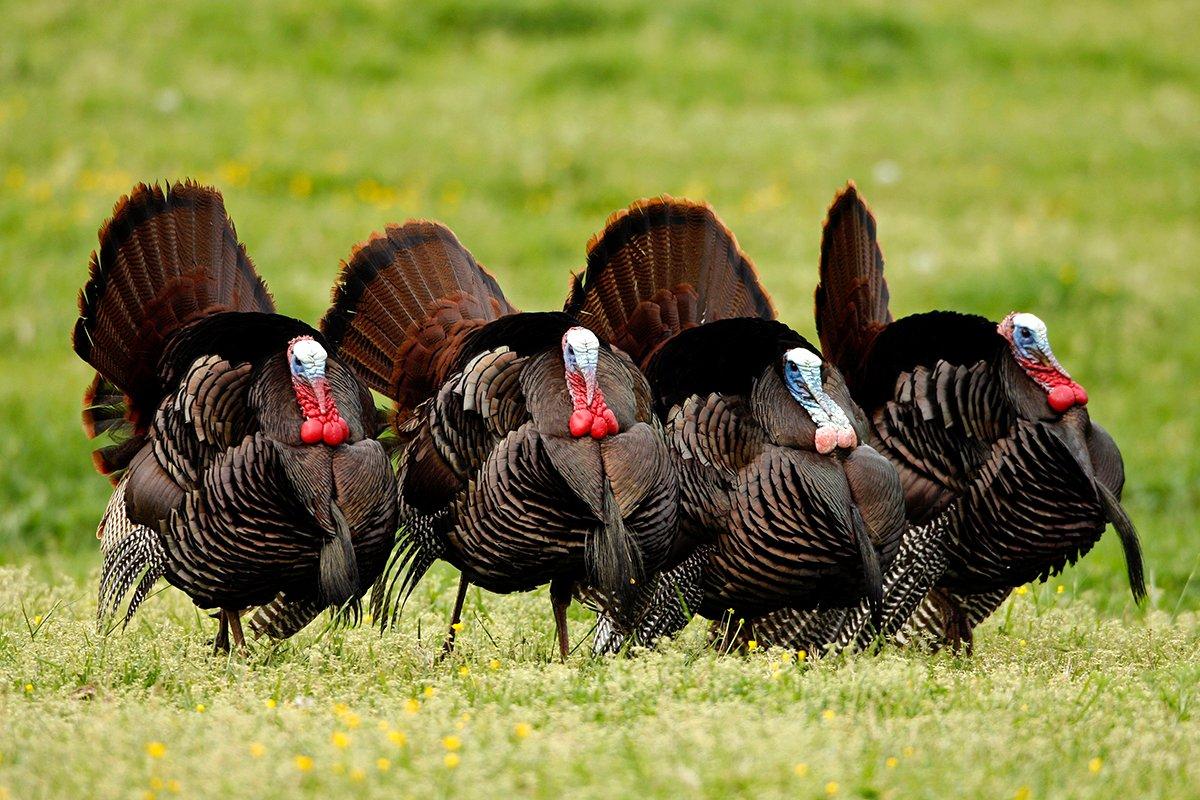
3 | Wild Turkey
Hit a turkey in the head with half a dozen shot pellets inside 50 yards, and he’s probably down for the count. Hit him in the body from beyond about 15 yards with a shotgun, and not only will that bird probably get away — he’ll probably fly away. A turkey’s feathers are layers thick. And while turkey bones are hollow and lightweight, they are difficult to break, and that includes the vertebrae and skull. That’s why serious turkey hunters look for tight patterns from their shotguns. Simply put, you can’t hit a gobbler in the head too hard, or too many times. That’s why I at once love the near guarantee of today’s premium turkey loads — but also detest the idea of shooting at gobblers from long range. They’re too magnificent to wound and lose, and you’re flirting with that any time you’re shooting them beyond 40 yards, no matter what you’re loaded with.
Many bowhunters have sob stories of losing gobblers, too. I’ve lost a few turkeys with a bow — but I have largely found the turkey’s resilience to arrows to be a product of incorrect shot placement more than anything. Too many bowhunters shoot turkeys right through the breast meat, and that won’t usually anchor them. Follow the drumstick up and hit them through the thighs, and they’ll fall within sight every time.
Image by Images on the Wildside
(Don't Miss: Early Season or Late: What's the Best Time to Kill a Turkey?)
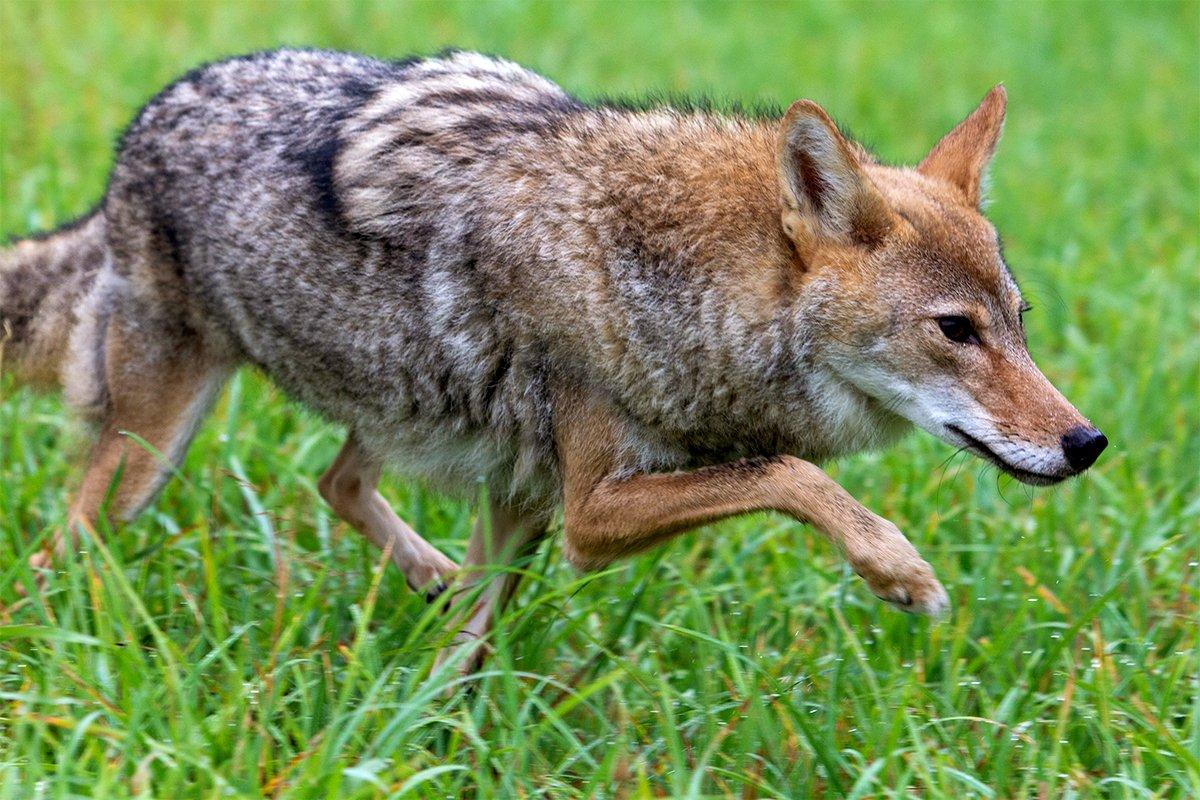
4 | Coyote
As with raccoons, I’ve shot a bunch of coyotes on the trapline. I’ve also called them in and shot them and taken them incidentally while deer hunting, turkey hunting, and squirrel hunting. I’ve killed coyotes with rimfire and centerfire rifles and handguns, with shotguns, and several with a bow.
Coyotes have thick fur but a thin hide, and so they aren’t difficult to penetrate. You can punch straight through them with a .22 rifle and a high-velocity, 40-grain solid bullet. Moreover, the average coyote isn’t as big as you might think. Most Eastern adult females weigh around 25 pounds, and males are a bit bigger. True 50-pounders are rare. By those physical measures, raccoons are tougher.
But coyotes have a tenacity that’s more difficult to measure. I’ve seen them hit squarely through the lungs with rimfire bullets and then act untouched. Shotguns are notoriously ineffective at bringing them down, unless you’ve taken the time to really pair a high-performance predator load with a good choke tube. But I’d guess most are shot with turkey guns and small-game loads, and a good many of those escape. High-velocity rifles firing frangible varmint bullets that break up shortly after impact are the way to go for anchoring coyotes quickly without passing through and destroying furs.
Image by Russell Graves
(Don't Miss: 8 Mistakes Rookie Coyote Hunters Make)
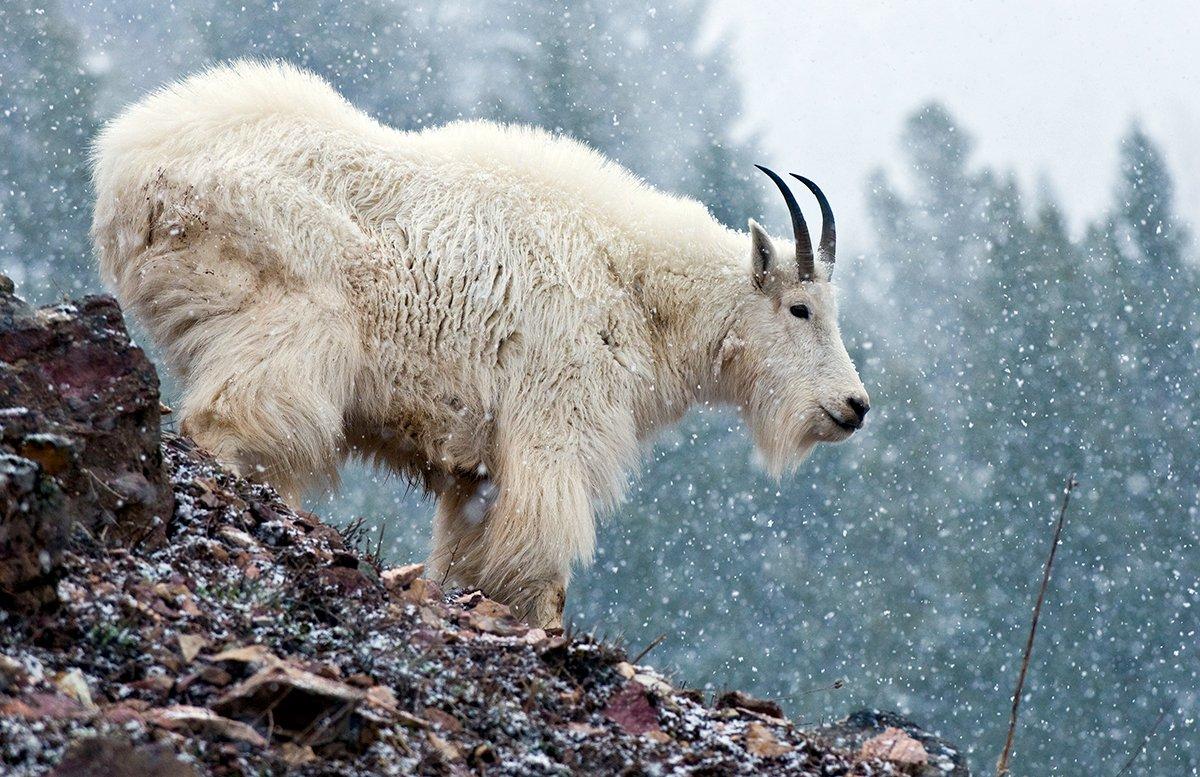
5 | Mountain Goat
I haven’t hunted Alaska, and so I called noted Alaskan hunter Tyler Freel, host of the Tundra Talk podcast, to weigh in on the Last Frontier’s toughest game animals. Freel is the only person I know to have once killed a grizzly bear (more on them in a bit) with a recurve and a napped stone broadhead, and he’s an avid moose and sheep hunter. He says when it comes to pure toughness, mountain goats get his vote. “Part of it is just because of the extreme places that they live,” he says. “But they can sure take a hit. And they’ve got a reputation of bailing off ledges, where it’s difficult to recover them.”
And difficult can even be an understatement. A buddy of mine went goat hunting last fall, shot a big billy, and watched it leap into a cloud-rimmed canyon, never to be seen again. If you’re hunting mountain goats, get steady and hit them well.
Image by Images on the Wildside
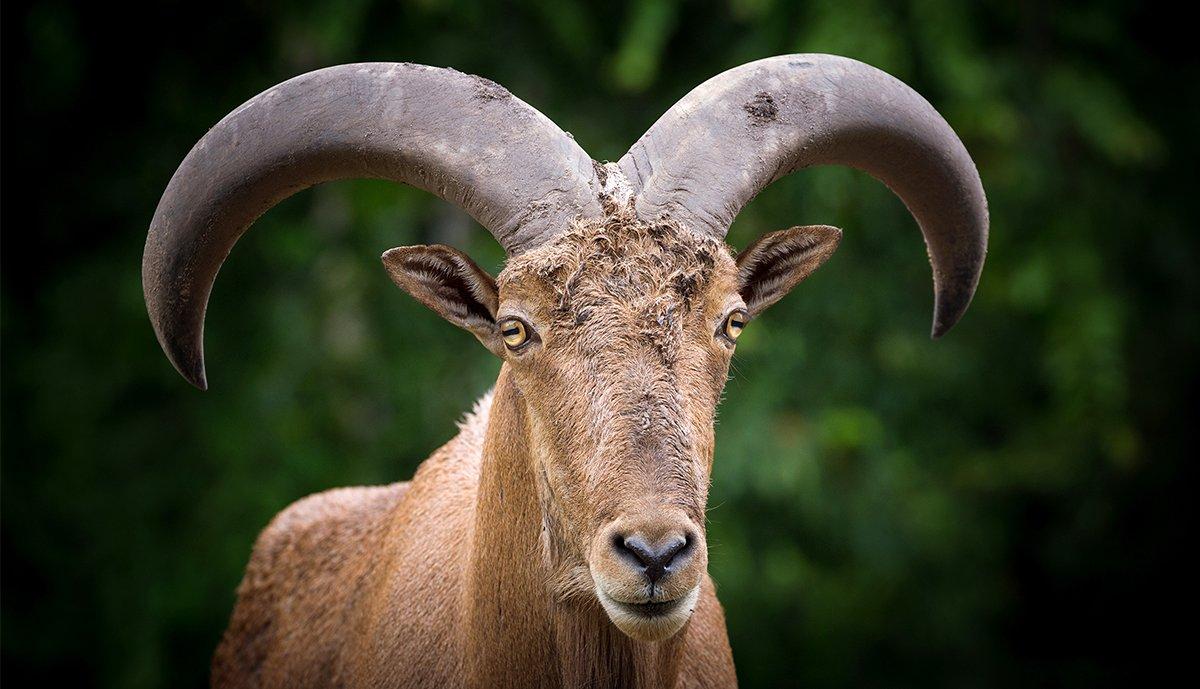
6 | Aoudad
It could technically be argued that the Barbary sheep, which is native to North Africa, isn’t a North American animal at all. Then again, the feral herds of sheep — best known as aoudad — roaming the mountains of West Texas and New Mexico outnumber the ones in their native range. They’ve also been a popular game animal for decades.
I had a chance to hunt them this spring, and besides being decidedly cool critters, aoudad have a reputation for being tough. My sheep went down without much fuss, but my buddy hit his twice, squarely through the lungs on both shots. We watched it crumple and fall, and were quietly celebrating and gathering up to walk to it — when the sheep got up and ran out of sight. Fortunately, we found it a short distance down the trail.
Aoudad guide Jim Breck Bean says that is common. “They’re the toughest animal I’ve ever hunted, without a doubt,” he says. Part of the reason is, due to the rugged, open country, rifle shots are on the rangy side, and precise shot placement becomes more difficult the farther away you are. But besides that, aoudad can just take a hit. Bean says to keep shooting until they’re down, and even when they’re down, to stay on them because as often as not, they get back up.
Image by Jeep2499
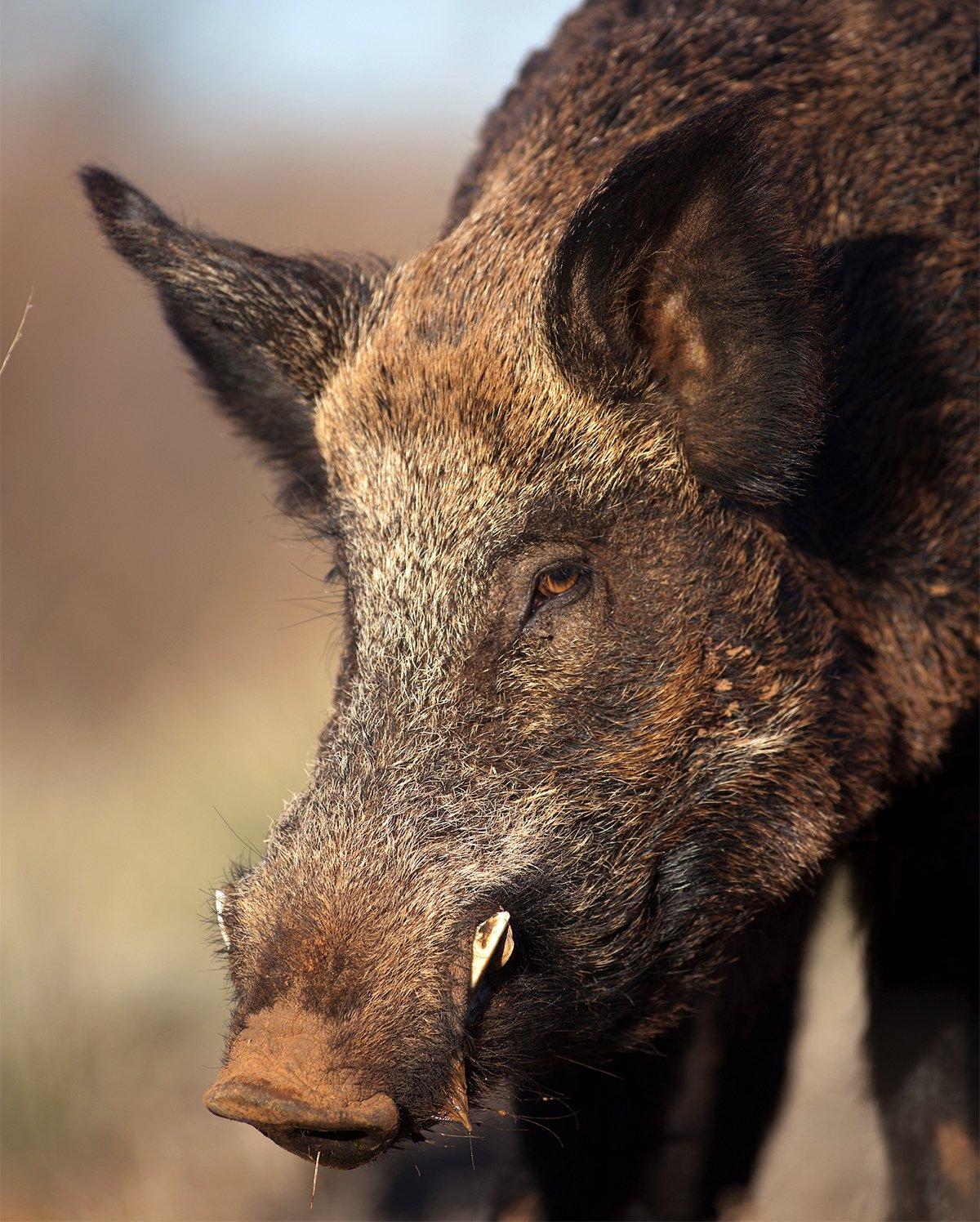
7 | Wild Pigs
Like aoudad, wild pigs are an invasive species. But they’re also among the most commonly hunted animals out there, particularly in the South. And they are notoriously tough. Much of that is due to their vital structure. A pig’s lungs seem to be small relative to its size, and they sit almost entirely between the shoulders. Aiming just behind the shoulder crease, as many do on deer, usually results in a gut-shot pig that’s difficult to recover.
That said, if you can penetrate the shoulder, pigs won’t make it far before expiring. That’s not much of a problem with rifles or bows on 125-pound, run-of-the-mill porkers. But if you’ve ever wondered if the “shield” over a mature boar’s chest is a myth, I’m here to tell you it’s certainly not. Big males topping 200 pounds have a layer of gristle over their rib cage that’s hardened by fighting, and it’s not only extremely difficult to penetrate, but it soaks up blood, making tracking even more difficult. Rifle hunters need to use enough gun (standard deer calibers work just fine), and bowhunters need to wait for quartering-away shot angles taken with sharp, fixed-blade broadheads.
Image by Russell Graves
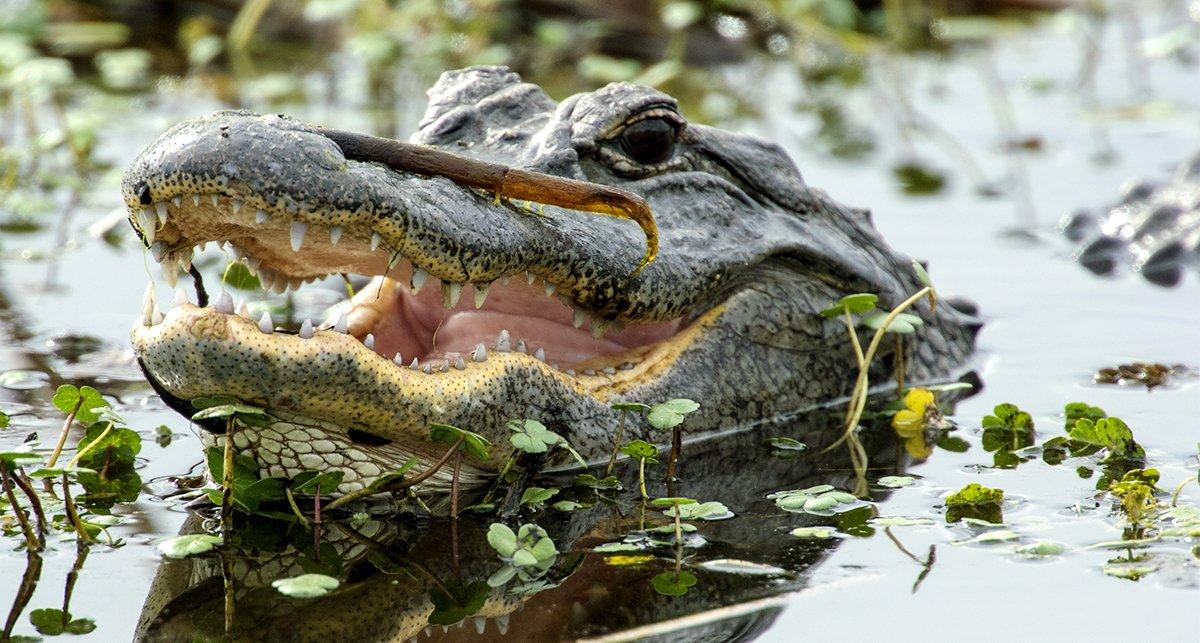
8 | American Alligator
I’ve bowfished for gators, hooked them with big trebles, and even called them in and shot them with rifles (legal on certain private lands with the right permit). The problem with alligators is that they live in the water, where recovery is inherently difficult, and they’re reptiles, covered in heavy scales and bony scoots that are difficult to penetrate. Besides that, they have primitive circulatory, respiratory, and neurological systems that are simply not disabled quickly. You might well kill an alligator with one shot — but he might keep moving his feet two hours later. Best wrap some tape around those jaws.
If you’ve spent much time watching Swamp People, you know that to dispatch an alligator quickly, a brain shot is all but required. The tiny target at the back of the head, just behind the eyeball, isn’t difficult to penetrate and break. Many gator hunters use a .22 WMR or a bang stick. But if you miss that spot, you’ll have a rodeo on your hands.
Image by Wildpix / Shutterstock
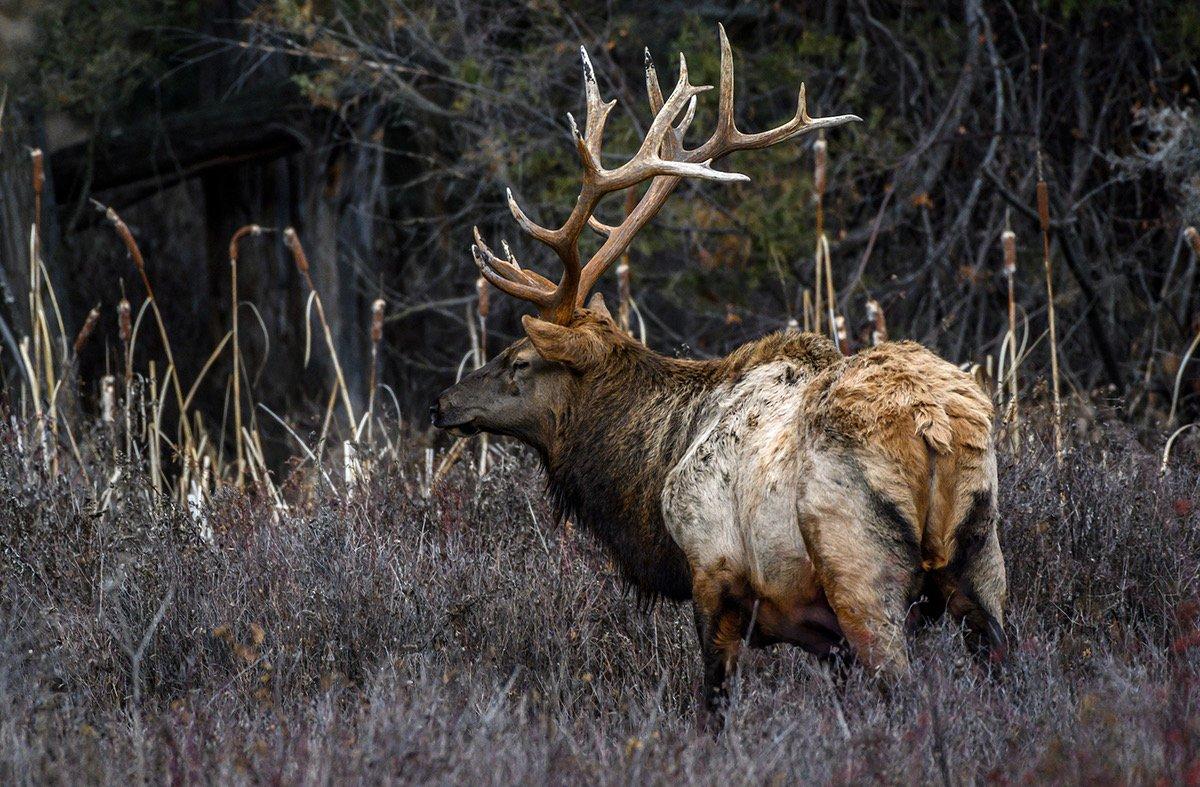
9 | Elk
It’s true that elk are a species of deer, and so are moose, and moose are quite a bit larger … so why are they not on the list? Most who’ve hunted both species will say that when it comes to tenacity for life, elk are in a class of their own. Moose are big, and it’s rare to anchor one in its tracks — but hit well, they rarely run far, either.
The same just can’t be said for elk. Miles Fedinec has been a Colorado elk guide for years. “They have more will to live than anything else I’ve hunted and in my opinion, they’re the toughest North American big-game animal,” he says. “Shoot an elk, even perfectly, and they might still run clear out of Dodge. They just don’t quit easily.”
Image by John Hafner
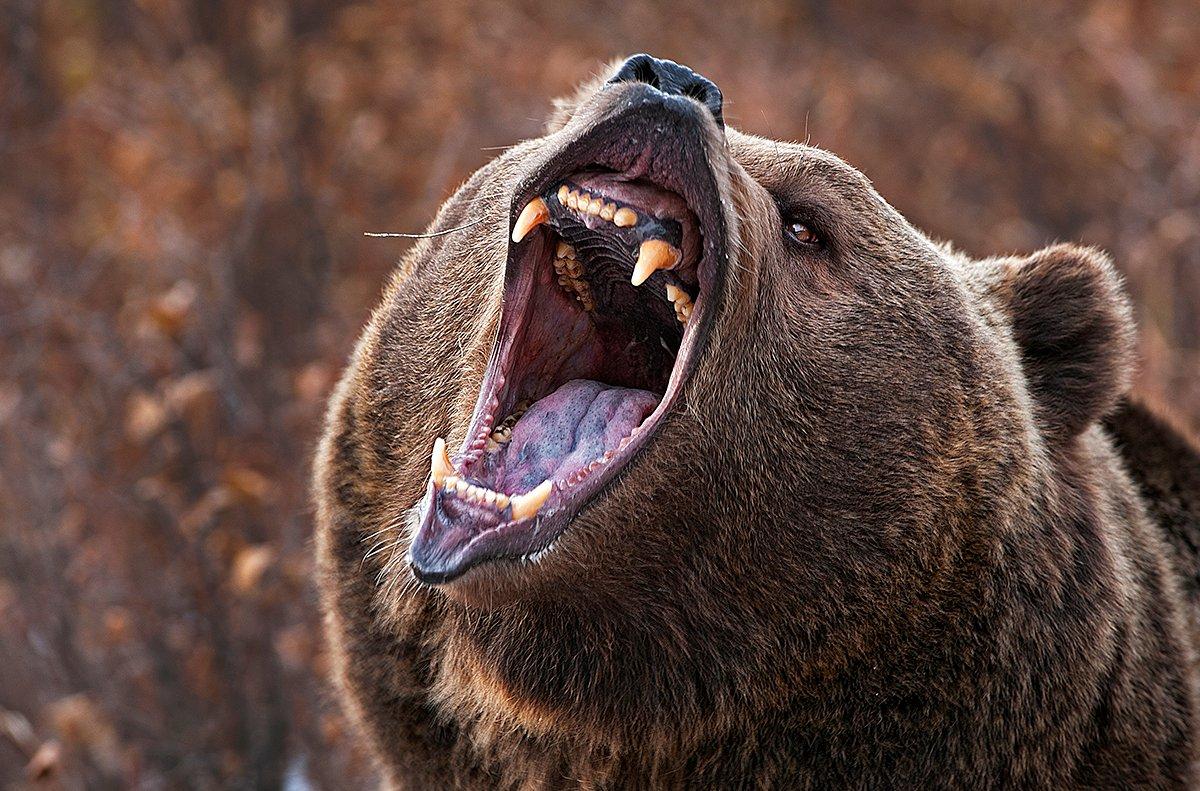
10 | Big Bears
Back in the late 1800s, a particular grizzly bear ran a decades-long campaign of terror against mountain settlers just south of Denver, Colorado. Legend had it that the giant bear, which came to be known as “Old Mose,” killed livestock and men alike. It was adept at avoiding hunters and traps, and seemingly bulletproof, but it was finally killed by a pair of bear hunters in 1904. Old Mose reportedly weighed 1,300 pounds. The story was reported (and maybe a bit sensationalized) by Outdoor Life at the time, and today there’s a statue of Old Mose outside Adams State University in Alamosa.
Researchers have since suggested that the legend of Old Mose was more likely a compilation of numerous different grizzly encounters in the region at the time. Some have even dared to suggest the bear was actually a sow.
But the legend is a pretty good reflection of why most hunters would assume that griz is the heavyweight champ on this list. Simply put, big bears are known for mauling hunters who have shot them. But much of that reputation is situational — and some of it is overblown. Alaskan Tyler Freel — who is a regular contributor to Outdoor Life — has as much experience around big bears as anyone I know. And he says that given good shot placement on a calm animal, “Bears are actually wimps.”
Make a bad shot, however, and the stakes change. “Injured bears, especially grizzlies, get amped up fast, and that’s when you run into problems,” he says. “But as for being difficult to penetrate or break down, they’re really not.”
The one bear to my credit was a big black bear in British Columbia. He went right down after I hit him with a .300 Win Mag, but he didn’t seem intent on staying there, and so I shot him a couple more times for good measure. Maybe that wasn’t needed. And maybe bears aren’t as tough as legend suggests.
Then again, tough can be subjective, if you’re getting charged or chewed on. I’ve never heard of a hunter who, having dealt with a wounded bear, regretted wasting ammo.
Image by Images on the Wildside
(Don't Miss: North American Super Slam: 29 Big Game Animals You Need)











